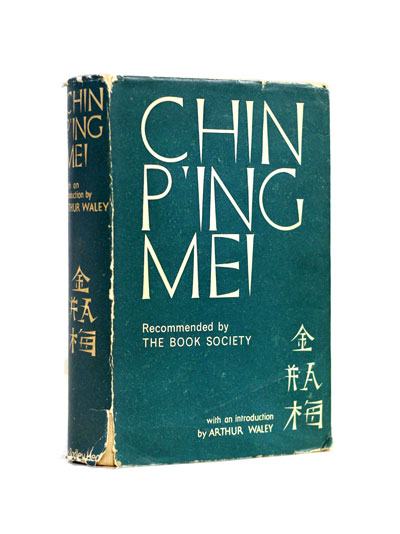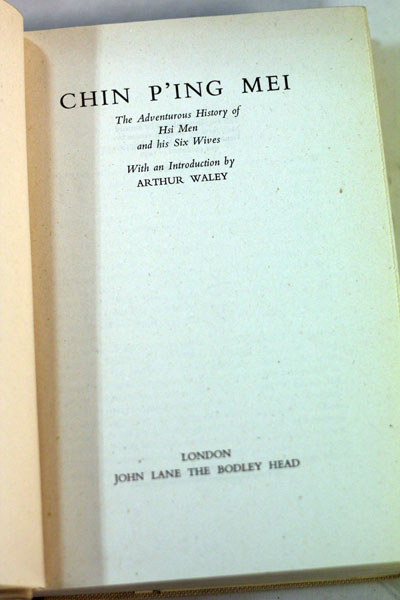About the book (from wikipedia):
Chin P’ing Mei (Chinese: 金瓶梅; pinyin: Jīn Píng Méi) — translated into English as The Plum in the Golden Vase or The Golden Lotus — is a Chinese naturalistic novel composed in vernacular Chinese during the late Ming Dynasty (1368–1644). The anonymous author took the pseudonym Lanling Xiaoxiao Sheng (蘭陵笑笑生), “The Scoffing Scholar of Lanling,” and his identity is otherwise unknown (the only clue being that he hailed from Lanling in present-day Shandong). The novel circulated in manuscript as early as 1596, and may have undergone revision up to its first printed version in 1610. The most widely read version, edited and published with commentaries by Zhang Zhupo in 1695, unfortunately accepted the deletion and rewriting of many passages.
The graphically explicit depiction of sexuality garnered the novel a notoriety in China akin to Fanny Hill and Lolita in English literature, but critics such as the translator David Tod Roy see a firm moral structure which exacts retribution for the sexual libertinism of the central characters.
Jin Ping Mei takes its name from the three central female characters — Pan Jinlian (潘金蓮, whose given name means “Golden Lotus”); Li Ping’er (李瓶兒, given name literally means, “Little Vase”), a concubine of Ximen Qing; and Pang Chunmei (龐春梅, “Spring plum blossoms”), a young maid who rose to power within the family. Chinese critics see each of the three Chinese characters in the title as symbolizing an aspect of human nature, such as mei (梅), plum blossoms, being metaphoric for sexuality.
Princeton University Press, in describing the Roy translation, calls the novel “a landmark in the development of the narrative art form – not only from a specifically Chinese perspective but in a world-historical context…noted for its surprisingly modern technique” and “with the possible exception of The Tale of Genji (c. 1010) and Don Quixote (1605, 1615), there is no earlier work of prose fiction of equal sophistication in world literature.”



